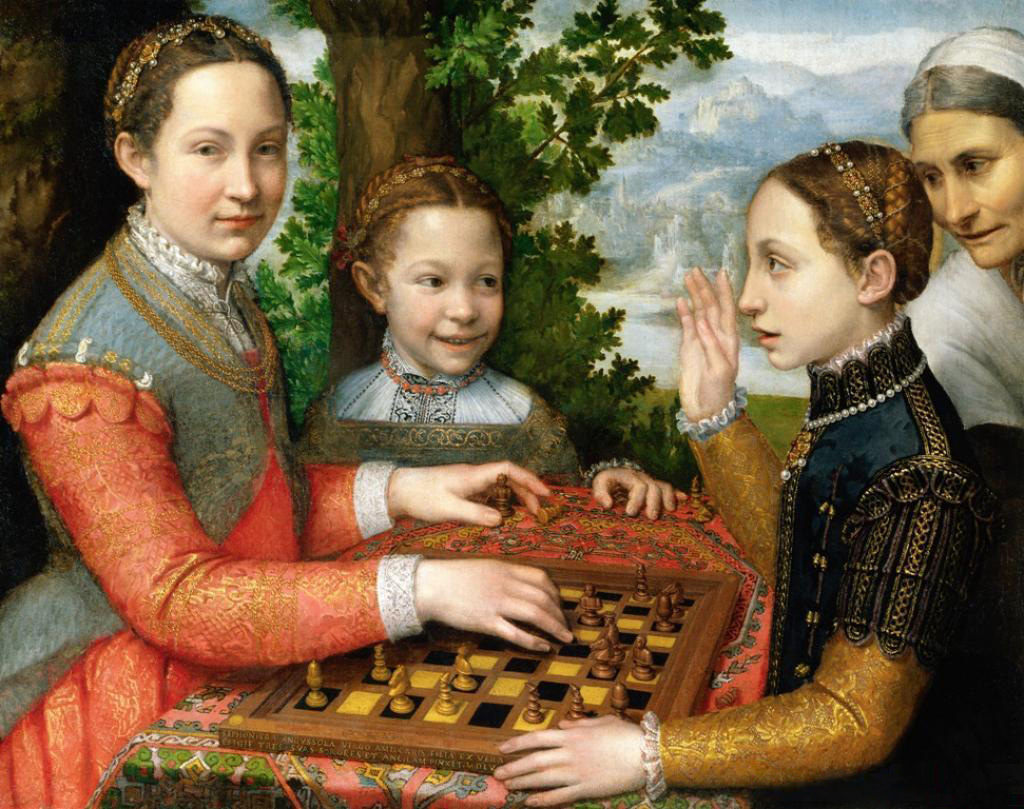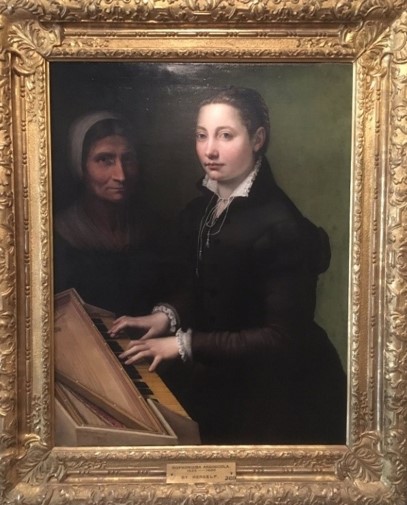Time is a terribly scarce commodity for those of us who spend our skills and labour equally on our families and our own work.
Laura Cereta, Letter to Sigismondo de’ Bucci, 1486
It seems terribly modern, doesn’t it, a woman complaining about trying to do (“our own”) intellectual work whilst being constantly pulled back to domestic labour, but it goes back a long way – more than five hundred years at least, according to Laura Cereta, a female humanist from Brescia in Northern Italy.
I’ve been thinking about subject a lot, especially recently, where one of the unforeseen consequences of the Covid lockdown has been to severely dent the productivity of women in academia, but not men. Art History, more than any other university discipline, is a discipline of women. Most of my colleagues are women. Most of my students are women. Museum and gallery curators, increasingly, are women (though, predictably, not as well paid as their male colleagues). The discipline’s femininity surely adds to its perception as a “useless” degree subject amongst some people (who, to be fair to them, have the kind of strong opinions that are only possible without the burden of knowledge or experience). But anyhow, women are more successful in Art History than, probably, any other humanities discipline. However, there are real problems, still, and they are often, ironically, linked to our failure to look at what is staring us in the face.

Sofonisba Anguissola, The Chess Game. 1555. 72 x 97cm. National Museum, Poznań.
Look at those Anguissola sisters, for example, playing chess together in 1555. The moment was crystallised in time by a fourth sister, Sofonisba, whose life became dominated by her prodigious talent for painting. In the image, the oldest sister, Lucia, has just taken her opponent’s black queen, much to Minerva’s consternation. Their little sister, Europa, laughs with delight at Minerva’s discomfort. It’s very unusual for the period in having that authentic feeling of love and rivalry amonst siblings, a kind of Renaissance Little Women.
The game of war, chess’s complexities and intellectual challenges were a man’s thing in the sixteenth century. It’s no doubt that we should understand this panel as a feminist artwork, that celebrates the power of the (literal) sisterhood. A truly innovative painting within the context of Northern Italian art, this is one of Sofonisba’s most famous works.
Most analysis, understandably, concentrates on the dynamic between the sisters, But there’s a fourth person on this panel, isn’t there? Her grey hair neatly tied back in a white linen wrap, head turned to look at the game. She’s not playing chess; I wonder if she didn’t have the time? She’s one of the hundreds of servants/attendants/maids/slaves on sixteenth-century paintings, often as an older, darker foil to the luminous white skin and fair hair of the main character. They are only very recently getting attention from art historians.

Thinking about this woman has made me notice the profligate use of time on this image and others that depict renaissance women in their pleasant, but fundamentally unproductive, pursuits. The same woman turns up again in one of Sofonisba’s many self portraits, now at Althorp House, a stately home in Northamptonshire (UK). Here the artist is showing off her musical ability – a much more cherished “feminine” pursuit in this period than chess. There used to be an inscription on this portrait that proclaimed Sofonisba’s status as an unmarried maiden, despite her great age of 23; the proclamation of her as “virgo” is repeated on many of her self-portraits. In fact, she didn’t marry until she was around 40, unlike two of her sisters who gave up on painting once they found husbands. Maybe, like the Venetian feminist Moderata Fonte, Sofonisba questioned the usefulness of getting hitched: “what exactly does [a woman] gain from it, except that instead of being her own mistress and the mistress of her own money, she becomes a slave, and loses her liberty and … her control over her own property?” Interestingly, female academics who get married – whether or not they have children – are likely to do less well in their career than their unmarried counterparts.
The servant looms out of the darkness and, like the artist, looks straight at us. She’s aged in the five years since The Chest Game was painted – her cheeks more sunken, eye sockets darker. You might, like Michael Cole, think Sofonisba’s portrayal of her servant is “sympathetic”. I agree to some extent, suggest that this runs the risk of being overly comforting. It suggests that our main protagonist, the one prettily playing the keyboard, is a good person who treats her servants well. We have a woman making it good against the odds, someone we can wholeheartedly celebrate – a feminist hero, the exception that proves the patriarchal rule. This is a past where people were absolutely fine with structural inequality (unless it directly impeded them, of course), a past where servants knew their place, and were grateful for the crumbs from their mistresses’ tables.
For me, though, the figure of the older woman looks like the ghost of femininity yet-to-come. Her features are tired due to a life of looking after her rich-girl charges. Always ready to tidy up the discarded chess pieces, wipe sticky fingerprints off the clavichord, she melts into the background – always there, but never the centre of attention. Think what would have happened to Sofonisba had she had to tidy up after herself and, god forbid, the children.
It’s easy to judge a woman who has been dead for 450 years, I suppose – and recently some commentators have harrumphed that we can’t “judge” history with today’s eyes (but surely today’s eyes are the only eyes we have, and pretending otherwise is effectively choosing not to look?). Anyhow, there have always been people who disagreed, who fought back, who wanted more for themselves and other people. It’s not like everyone agreed in the past.
Academia is a career where it is unlikely you will get a job in the place where you grew up or studied. It normally necessitates a break from the family and friendship networks that are so essential for the well-being of women with babies and young children. It means that to do our jobs we normally need to ship out some of that reproductive labour (“activities that reproduce the work force – this includes daily activities as cooking, washing clothes but also bearing children)” – all the stuff that still takes up so much time for female academics, especially during a pandemic.
Those cleaners, childcare workers and nannies are almost all women, tend to be from less socially advantaged backgrounds, and are more likely to be people of colour and/or recent immigrants. They tend to earn much less than the people whose children or houses they care for, despite their key role in keeping society, keeping life, going. The disjunction between “essential” labour and the labour society actually pays properly for has been starkly highlighted recently.
I don’t have a solution for this (beyond making my sons do their share of the housework); my expertise is “useless”, after all. It’s made me pause, however, about condoning feminist analyses that ignore economic inequality, whilst reifying works that explicitly endorse it. Art History (especially Italian Renaissance art history) has a class and a race problem. It’s clearer now, perhaps clearer than at anytime in my lifetime, how fundamentally the way we understand the past directly affects the present. Coming from a discipline dominated by women, a discipline based on looking, I (we?) need to pay closer attention to those figures who have dwelled in the shadows for too long.
Leave a comment